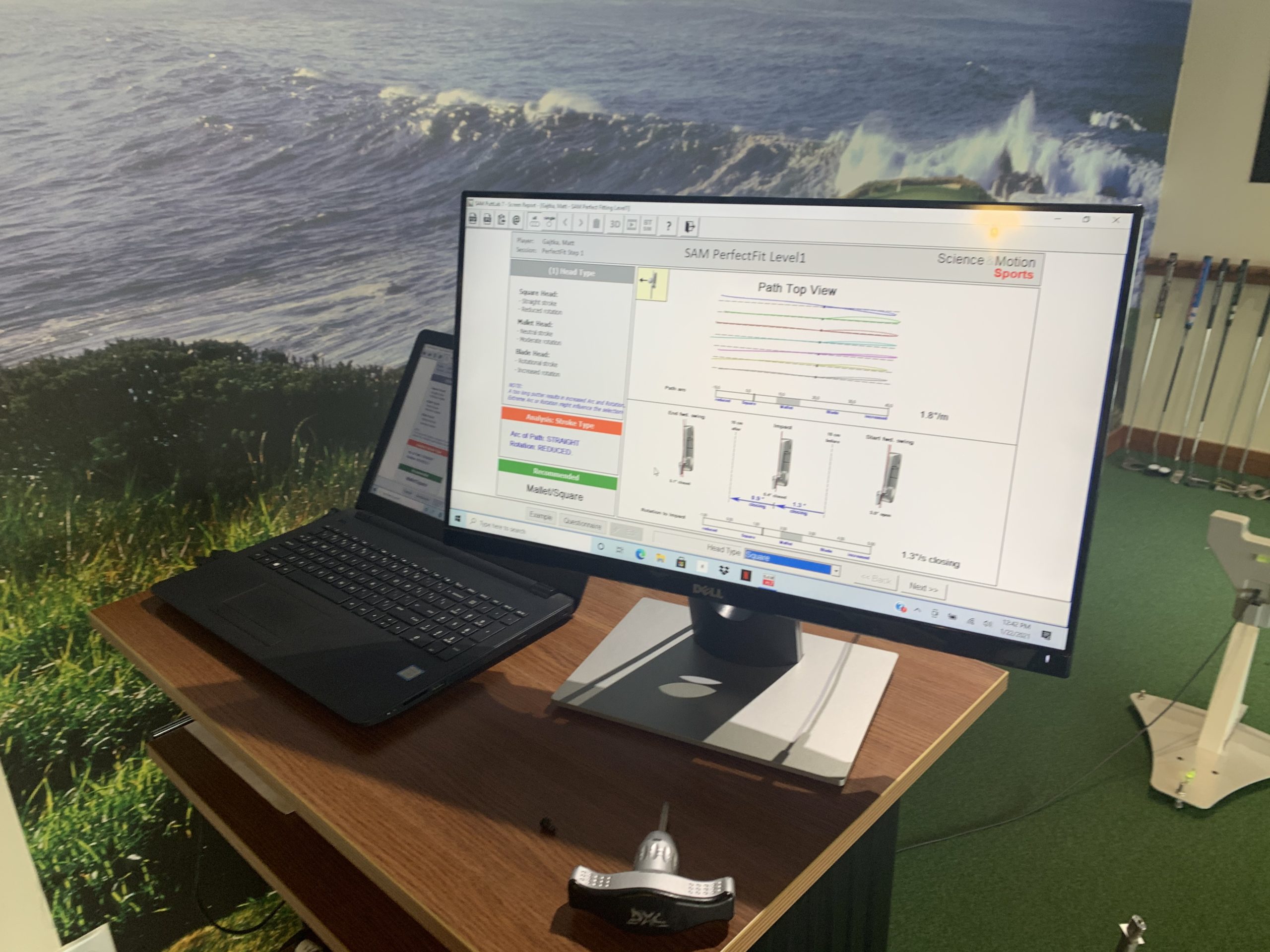Game Improvement
Game Improvement: A Fitting Fit for a King, at Club Champion

ROBINSON TOWNSHIP, Pa. — I’ll start by saying that the look of a golf club is vitally important to me.
It’s part of the reason why I haven’t changed clubs very often over my 20-plus years playing the sport.
The other reason is lack of money, but I digress.
I’ve been particularly resistant to change when it comes to putters. While newer drivers and woods and irons and wedges have all been appealing for their advances in technology, every time I’ve gotten my hands on a putter made this century, I’ve always thought that I still preferred my Odyssey White Hot No. 1, purchased back when Y2K was a thing.
Much of this comes down to looks — a putter head that resembles an alien spacecraft always seemed way too unwieldy to me — but part of it was my belief that advances in club construction matter less in that most artful of clubs.
I wasn’t wrong in that belief, but as I embraced the increased data running wild in the sport, a tipping point was reached. It was time to get a new putter, and it was time to get properly fitted for one.
To that end, I’d seen a few commercials for Club Champion while watching golf over the past year or two, so I was familiar with their services.
I’ve also driven past their location in Robinson Township countless times, either to drop our older son with his grandparents — it’s almost exactly midway between our house and theirs — or while cruising through on a shopping trip.
Sometimes you feel the universe pushing you a certain way.
I set up an appointment on their website and reserved an hourlong window for $100, with the promise that they’d refund half of that if I bought a putter afterward. (Fitting sessions run from $80 and an hour for wedges, all the way up to 3 1/2-hour full-bag fittings for $350.)
My fitting pro Luke sat me down briefly at the start to ask if I had any preferences for manufacturers (nope!) and to let me know that the club we settled on would be manufactured at Club Champion’s Chicago headquarters and shipped in a matter of weeks.
From there, it was on to the fun.
After Luke affixed a motion sensor to my current gamer, I stroked seven putts in front of a SAM PuttLab launch monitor. The metrics being tracked were: Clubhead path, clubhead rotation, aim, stance, lie angle and — most crucially — impact conditions.
Admittedly, the terms ‘launch’ and ‘impact’ sound a little overwrought when the clubhead is traveling at just a few miles per hour, but these metrics are just as relevant as if I stepped into the hitting bay to pound a few drivers. They don’t call it the ‘moment of truth’ for nothing.
And as usual, the truth was revealing.
Let’s start with the biggest epiphanies. As is the case with my driver swing, where it’s a big benefit, my putter stroke launches the ball upward plenty well.
Too well, in fact.

Image courtesy SAM PuttLab and Club Champion
Due to the improved green conditions of modern golf, putters these days are manufactured with less loft, since it’s not as necessary as it used to be to ‘dig’ the ball out of its own indentation.
So the easiest fix for Luke to make was to suggest a putter with a couple of degrees less loft, to minimize any skipping and bouncing immediately after impact. I didn’t expect to literally see a difference in the character of my putts after an adjustment or two, but I could tell the ball was rolling more smoothly with decreased loft.
The second major adjustment we made was more esoteric: Face balance.
Since my stroke doesn’t involve a lot of ‘release,’ that is to say, the toe of the clubhead doesn’t pass the heel much relative to the swing path, a blade-style, heel-shafted putter like the one I’ve been using for two decades isn’t ideal.
But more than that, these kinds of putters are also typically heavier in the toe, since they’re designed to keep the club from closing too quickly. I don’t have that issue — my release would best be described as neutral, as you’ll see below.

Image courtesy SAM PuttLab and Club Champion
As is often the case in golf, one mistake can lead to a negative chain reaction. Because my putter had more weight in the toe than it should, my natural, neutral release often left the clubhead open, frequently causing a right-side miss.
Knowing this on some level, I started to adjust, either by trying to turn the clubhead over through impact or — even worse — subconsciously aiming left in the apparent hope of ‘missing’ putts right and into the hole.
All of which leads to the ugliest slide Luke showed me.

Image courtesy SAM PuttLab and Club Champion
Yikes. Nearly 4 degrees closed at setup! Luke assured me that he thought the aim issue would be alleviated by getting the proper fit in other categories.
One other minor adjustment Luke suggested was to make the lie angle of my putter-to-be a little more upright. I like to stand ‘tall’ to the ball at address, while my previous putter encouraged more of a bent-over approach. Hence, the toe of was always a little off the ground, which can also lead to aiming left.
The next part of the fitting session was much more subjective. Luke produced four putters that were close to the specs he determined would be optimal for me. My task was simply to hit a boatload of putts to see which one fit my eye.
I quickly eliminated a Titleist Scotty Cameron model — the back end was too asymmetrical for my taste — and a mallet from an upstart brand called Evnroll, because I don’t care for the ‘wings’ look.
My choice boiled down to a no-frills, square-headed Evnroll design and a more modern mallet from custom-made giant PXG. Both were black with small white alignment lines. Can you tell I don’t like busy clubs?
I was leaning toward the Evnroll for a couple of minutes, but after 20 years using that buttery White Hot face insert, the rock-hard impact feel was difficult to embrace. Solid putter, but not for me.
So PXG it was! Easy to align, rolls ’em like a dream, feels soft but not too soft at impact.
In a few short weeks, the ridiculously-named Mini Gunboat will be my new gamer. I made five 15-footers in a row with the demo model just to reinforce the decision. Nice when that happens.

Front, back and top view of the newest sword in my sheath, the PXG Mini Gunboat. (MATT GAJTKA/PGN)
There’s no guarantee of results on the course, but my takeaway from the fitting experience at Club Champion was that the crack team of Luke and the launch monitor left little doubt about what the right specs were for me.
Of course, even during a scientific, data-driven process like this, there’s still plenty of room for those nebulous qualities of ‘feel’ and ‘look.’
But the most important part of the experience was the information — information I couldn’t get on my own. That’s the definition of a valuable service.
Best $100 I’ve spent on golf in a long while. Here’s to many more made putts this year.













